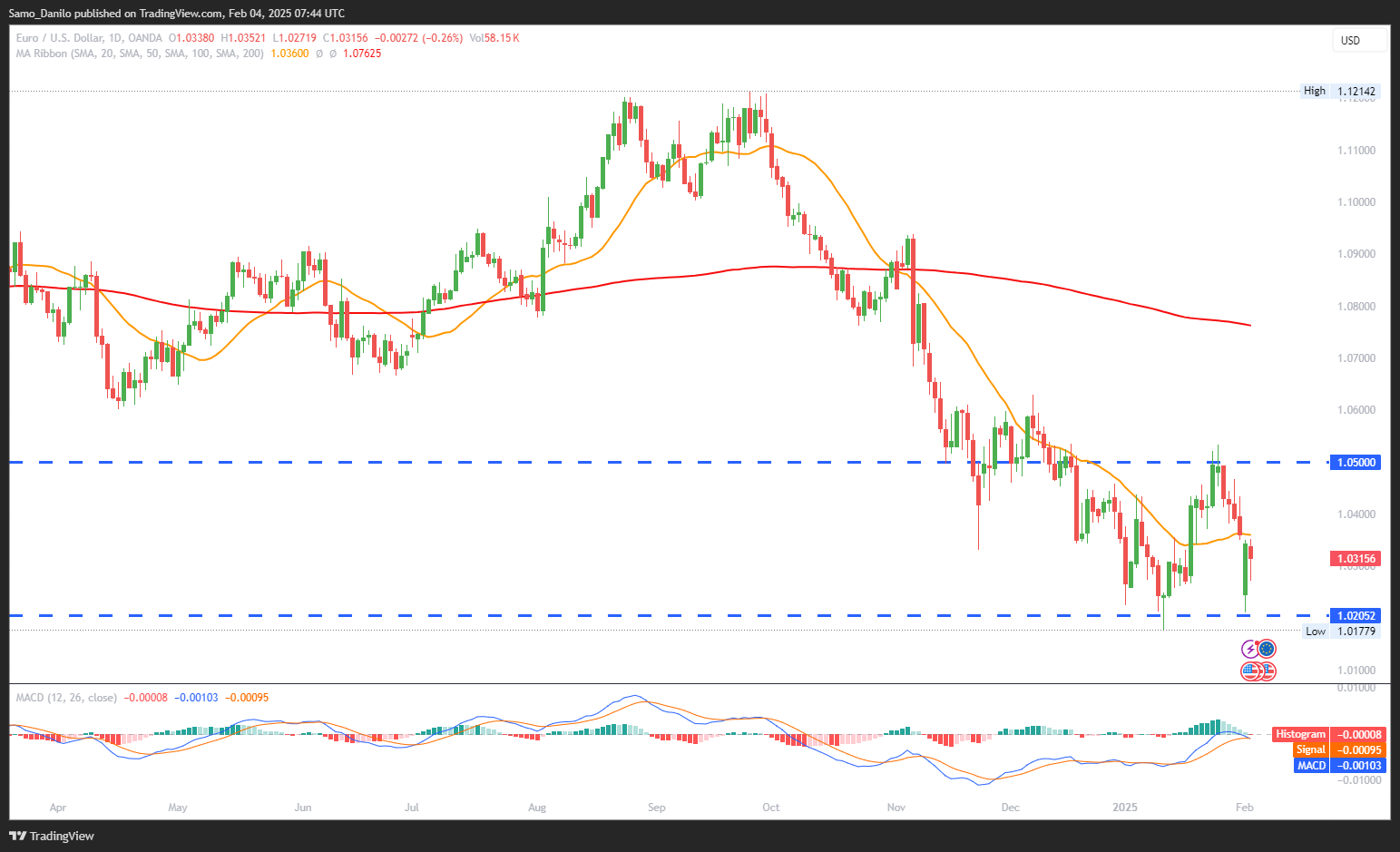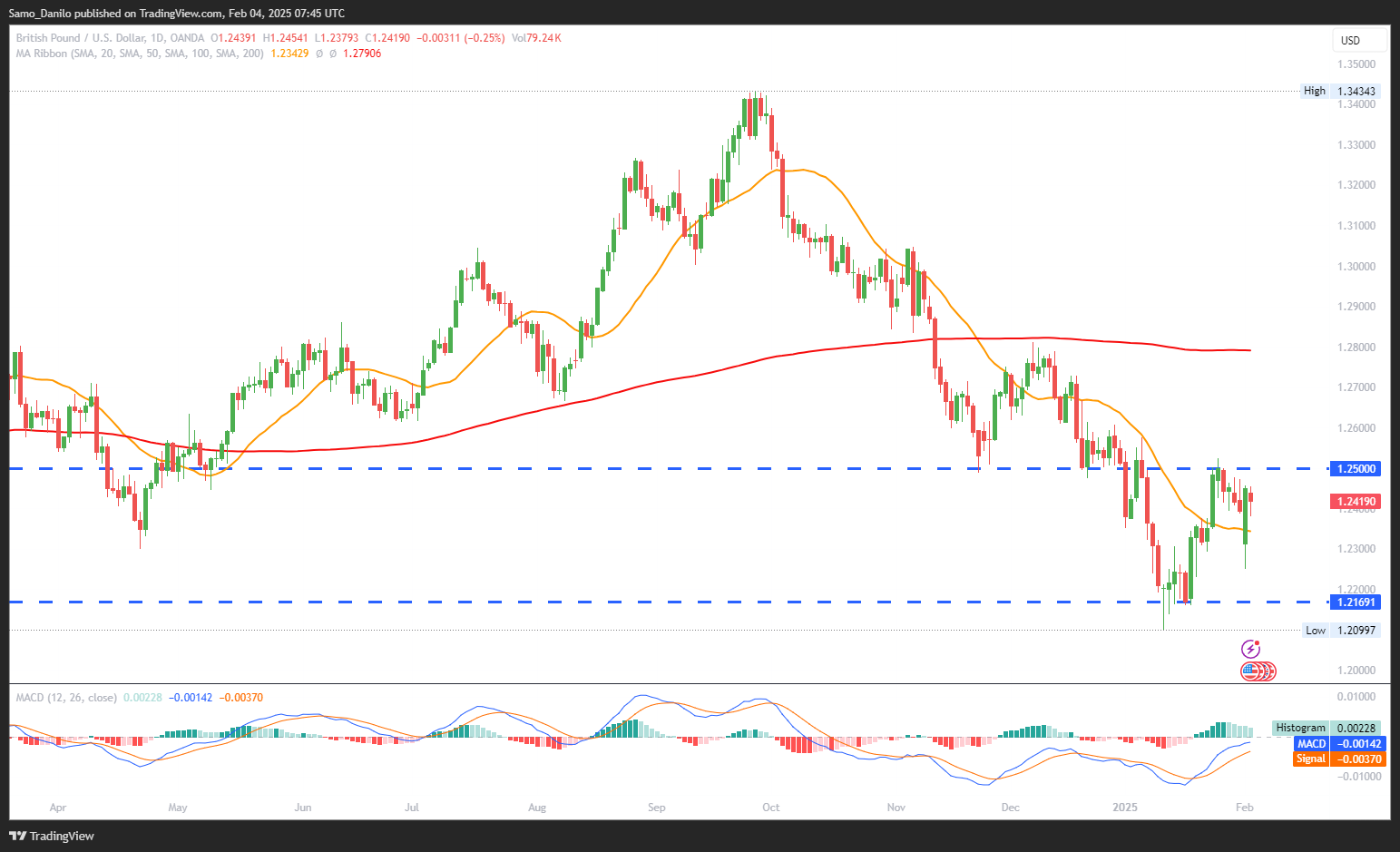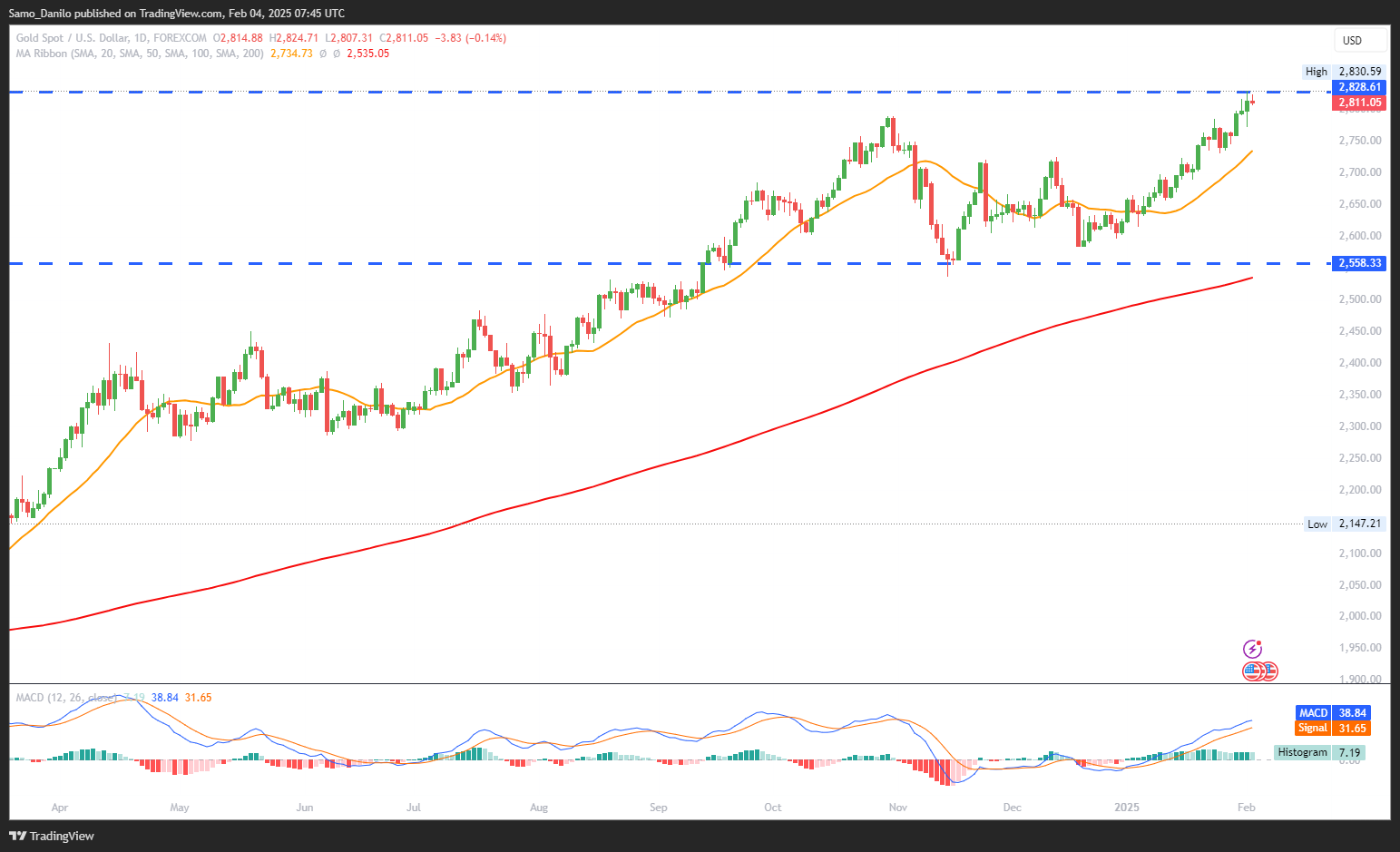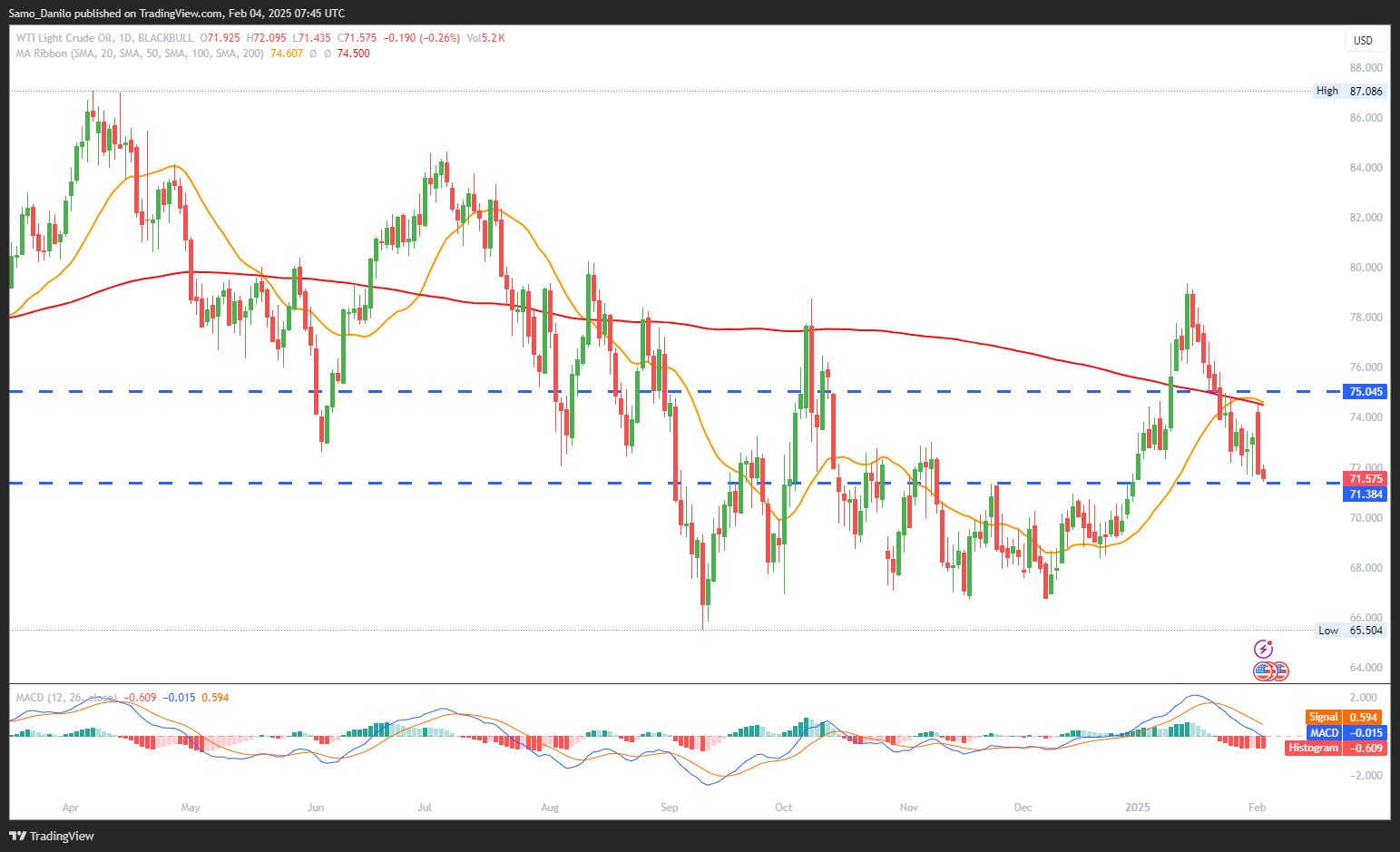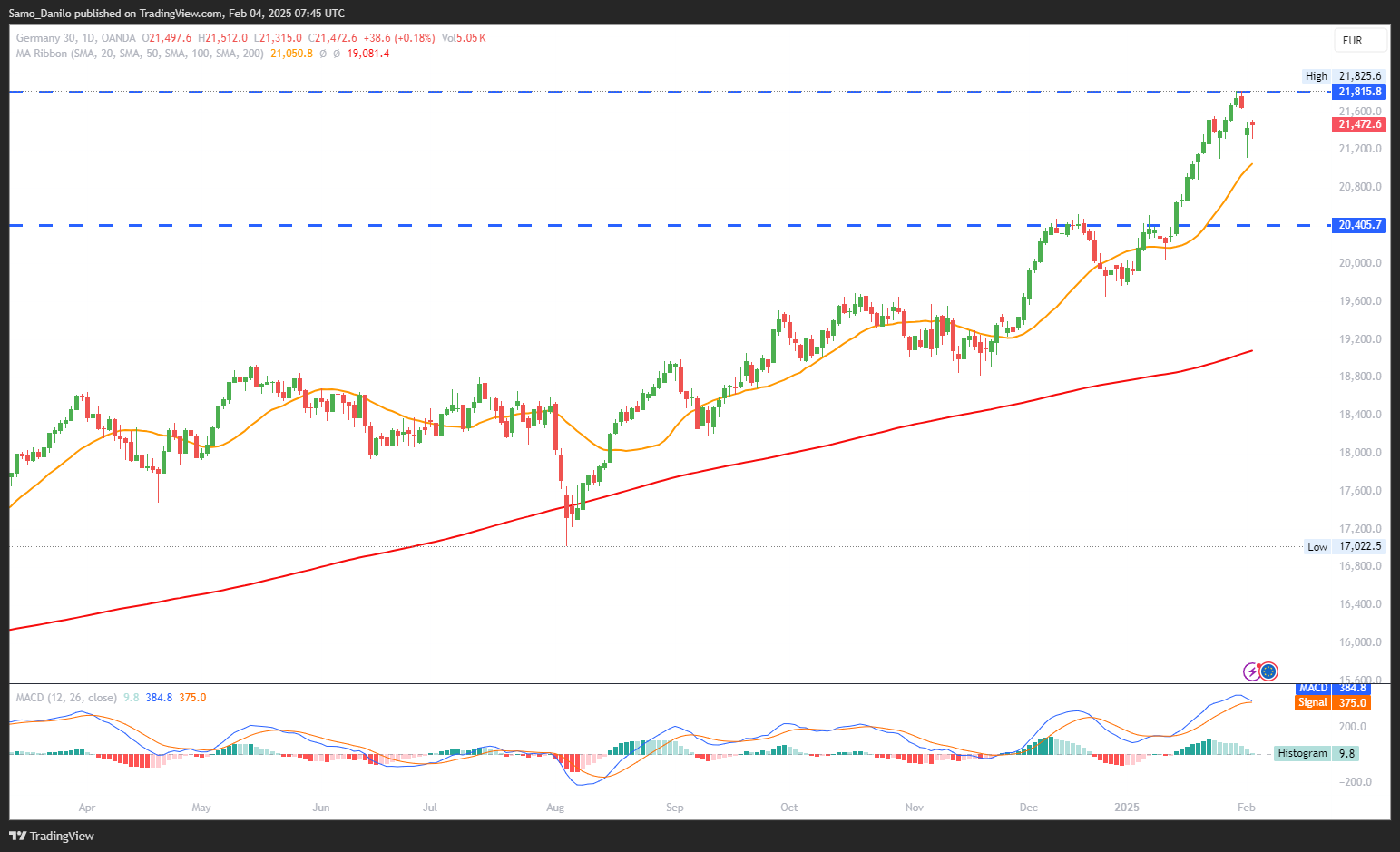EURUSD
- EUR/USD Price: The EUR/USD pair continues its downward trajectory, trading near 1.0300 in early European hours on Tuesday. The US Dollar (USD) benefits from renewed haven demand amid global market uncertainty, further pressuring the Euro.
- Eurozone Inflation: The Harmonized Index of Consumer Prices (HICP) in the Euro Area rose to 2.5% year-over-year in January, up from 2.4% in December and slightly above market expectations of 2.4%. The uptick in inflation could complicate the European Central Bank’s (ECB) rate-cut trajectory.
- ECB Policymaker Šimkus: ECB policymaker Gediminas Šimkus expressed support for a 25-basis-point (bps) rate cut in March, with expectations for additional cuts later in the year.
- ECB Policymaker Kažimír: Similarly, Peter Kažimír noted that while the latest rate cut brings the ECB closer to its policy goals, future decisions will hinge on wage developments and services inflation.
- Economic Calendar: The European economic calendar remains sparse this week, with pan-European Retail Sales data set for release on Thursday. Markets anticipate a rebound to 2.0%, which could offer some support for the Euro. Traders are also eyeing the upcoming US Nonfarm Payrolls (NFP) report on Friday, a crucial indicator for Federal Reserve policy expectations.
Closing statement: EUR/USD remains under pressure amid USD strength and cautious ECB policy signals. While higher Eurozone inflation may slow the pace of rate cuts, traders will closely watch US economic data for further market direction.
GBPUSD
- GBP/USD Price: The GBP/USD pair trades around 1.2430 during European hours on Tuesday, giving up some of the previous session’s gains. The pullback comes as the US Dollar stabilizes and market sentiment remains cautious.
- US Dollar Index: The US Dollar Index (DXY), which tracks the USD against six major currencies, steadies around 108.70 after erasing most of its previous session's gains. The Greenback remains supported by solid economic data and shifting trade policies.
- Tariff Pause: US President Donald Trump announced late Monday that he would pause tariffs on Mexico and Canada, improving market sentiment. This development initially provided support to GBP/USD before the pair lost momentum.
- US Manufacturing Data: Upbeat US economic data bolstered the Greenback. The ISM Manufacturing PMI rose to 50.9 in January from 49.3 in December, surpassing market expectations of 49.8. The expansion in manufacturing activity adds to speculation that the Federal Reserve could delay rate cuts.
- BoE Rate Cut: The Pound Sterling remains under pressure amid growing expectations that the Bank of England (BoE) will restart its policy-easing cycle. Markets anticipate a 25-basis-point (bps) rate cut to 4.5% at Thursday’s policy meeting, limiting GBP/USD’s upside potential.
Closing statement: GBP/USD remains vulnerable as strong US data supports the Greenback, while BoE rate-cut expectations weigh on the Pound. Traders will closely monitor upcoming central bank decisions and key economic releases for further direction.
XAUUSD
- Gold Price: Gold remains in a consolidation phase after reaching a record high on Monday. However, rising US bond yields and a modest uptick in the US Dollar (USD) are capping further gains for the precious metal.
- Fed Official Goolsbee: Chicago Fed President Austan Goolsbee emphasized that economic uncertainties require caution in rate cuts, warning about potential inflationary pressures.
- Fed Official Bostic: Similarly, Atlanta Fed President Raphael Bostic stated that he prefers to wait before cutting rates again, signaling a patient approach to monetary policy.
- Tariff Suspension: US President Donald Trump announced a 30-day suspension of tariffs on Mexico and Canada after their leaders agreed to deploy 10,000 troops to the US border to curb drug trafficking. This move has temporarily eased trade tensions and limited demand for safe-haven assets like gold.
- US JOLTS Job Openings: Market participants await the US JOLTS Job Openings report, expected to show 8 million openings in December. A weaker-than-expected reading, combined with further cautious commentary from Federal Reserve officials, could reinforce selling pressure on the USD, potentially pushing gold back toward its record highs.
Closing statement: Gold consolidates near all-time highs, with US bond yields and Fed caution limiting immediate upside. The next move hinges on US labor data and central bank commentary, with a weaker USD potentially fueling another rally in XAU/USD.
CRUDE OIL
- WTI Price: West Texas Intermediate (WTI) crude oil prices continue to slide after retracing from a one-week high. Selling pressure persists for the second consecutive day as market sentiment weakens.
- Trump Delays Tariffs: US President Donald Trump announced a one-month delay on newly imposed tariffs on Canadian and Mexican imports. This move reduces fears of immediate supply disruptions from two of the largest crude suppliers to the US, putting downward pressure on oil prices.
- China's Tariffs: The US officially imposed a 10% tariff on Chinese imports, prompting Beijing to respond with retaliatory measures. Starting February 10, China will impose a 15% levy on US coal and liquefied natural gas (LNG), along with a 10% tariff on US crude oil. This escalation in trade tensions raises concerns over future demand for US energy exports.
- OPEC+ Output Policy: The Organization of the Petroleum Exporting Countries and its allies (OPEC+) resisted calls from Trump to increase production and opted to maintain their existing supply plans. This decision suggests that the group remains committed to supporting oil prices through controlled output.
- Oil Inventory Data: Market participants now turn their attention to weekly US crude oil stockpile data for the week ending January 31. Analysts expect a rise in crude inventories, while gasoline and distillate stockpiles are projected to decline. These figures will be closely watched for further direction in oil prices.
Closing statement: Crude oil prices face headwinds from easing supply concerns, trade tensions, and inventory build-up expectations. While OPEC+ maintains its stance on production, traders will closely monitor US stockpile data for further price cues.
DAX
- DAX Price: The DAX is under pressure on Tuesday as it struggles to stabilize after starting the week in negative territory. Concerns over escalating customs disputes, particularly between the US and China, are weighing on investor sentiment.
- China Tariffs: Following US President Donald Trump’s imposition of tariffs on Chinese imports over the weekend, China has responded with counter-tariffs. Beijing’s Ministry of Finance announced a 15% additional duty on US coal and liquefied natural gas (LNG), further fueling trade tensions.
- German Inflation: In Germany, consumer prices unexpectedly declined by 0.2% in January compared to December. The annual inflation rate now stands at 2.3%, below the expected 2.6%. This softer inflation reflects lower energy costs and a slowdown in food price growth, easing some of the price pressures.
- Eurozone Inflation: Contrasting with Germany’s inflation data, the Eurozone’s January inflation report showed a slightly stronger-than-expected increase. Headline CPI rose to 2.5%, while core CPI remained steady at 2.7%. This inflation disparity could shape the European Central Bank’s (ECB) monetary policy, with expectations that the ECB might continue with easing measures.
- Diverging Monetary Policies: With inflation remaining subdued in Germany but more robust across the broader Eurozone, monetary policy paths may diverge. While the US Federal Reserve is expected to pause any rate changes, the ECB might lean toward further easing, influencing market dynamics in the coming weeks.
Closing statement: The DAX faces a challenging environment marked by trade disputes and mixed economic signals. As the market digests inflation disparities and potential ECB moves, caution may prevail among investors. Keeping an eye on further developments in the US-China trade spat and ECB commentary will be crucial for gauging the next steps for the DAX.
